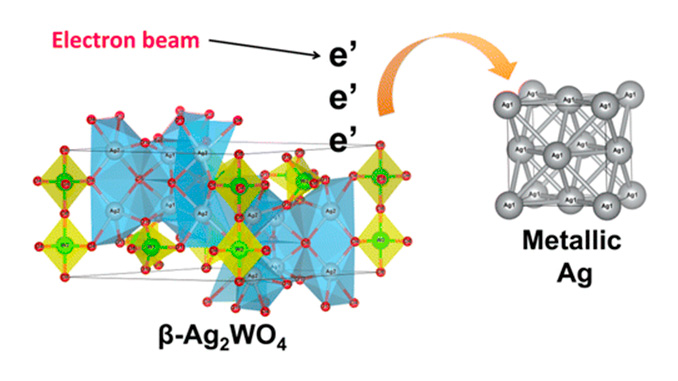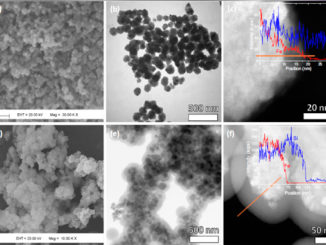
Writers: Roman A. Roca, Amanda F. Gouveia, Pablo S. Lemos, Lourdes Gracia, Juan Andrés, and Elson Longo
Keywords: Nanoparticles; Synergetic Computational; Experimental Study
Abstract: In the present work, a combined theoretical and experimental study was performed on the structure, optical properties, and growth of Ag nanoparticles in metastable β-Ag2WO4microcrystals. This material was synthesized using the precipitation method without the presence of surfactants. The structural behavior was analyzed using X-ray diffraction and Raman and infrared spectroscopy. Field-emission scanning electron microscopy revealed the presence of irregular spherical-like Ag nanoparticles on the β-Ag2WO4 microcrystals, which were induced by electron beam irradiation under high vacuum conditions. A detailed analysis of the optimized β-Ag2WO4 geometry and theoretical results enabled interpretation of both the Raman and infrared spectra and provided deeper insight into rationalizing the observed morphology. In addition, first-principles calculations, within the quantum theory of atoms in molecules framework, provided an in-depth understanding of the nucleation and early evolution of Ag nanoparticles. The Ag nucleation and formation is the result of structural and electronic changes of the [AgO6] and [AgO5] clusters as a constituent building block of β-Ag2WO4, which is consistent with Ag metallic formation.




